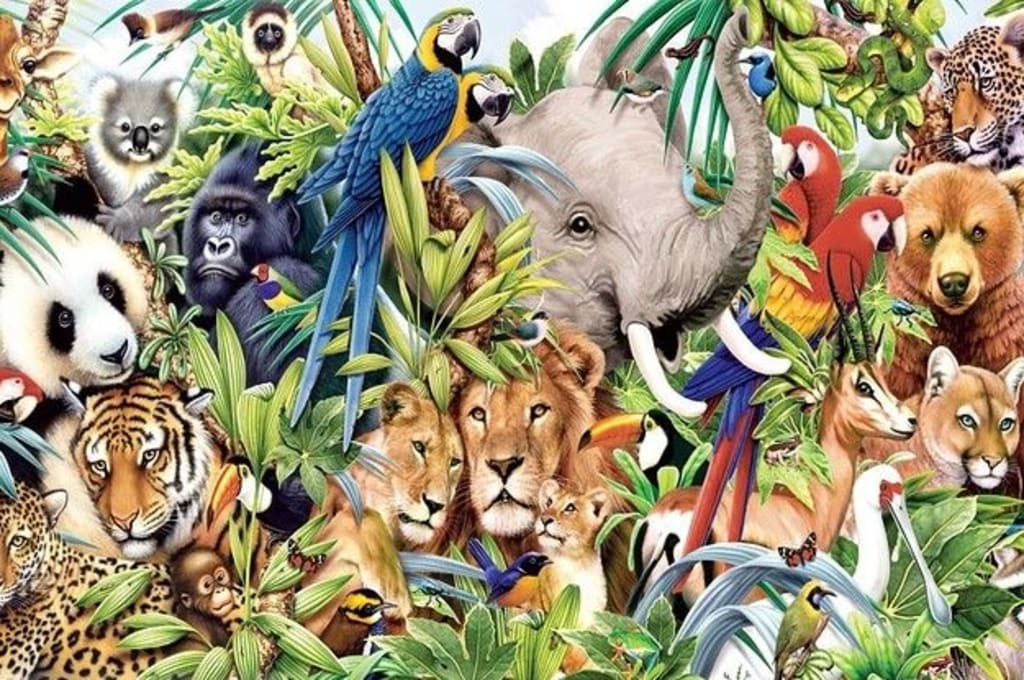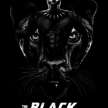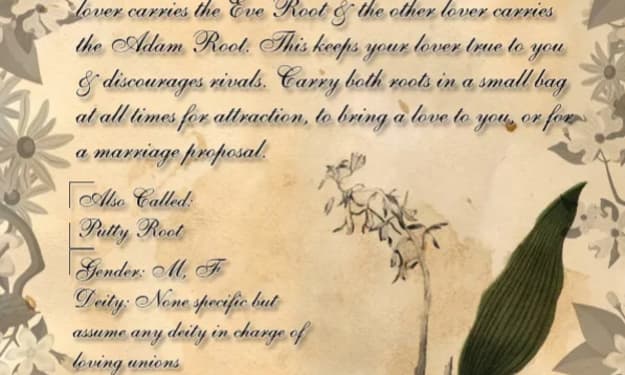the history of animals
the history of all type animals

Of the pieces of creatures some are simple:to wit,all, for example, partition into parts uniform with themselves, as tissue into tissue; other are composite, like gap into parts not uniform with themselves, as, for example, the hand doesn't isolate into hands nor the face into faces.
Furthermore, of, for example, these, some are called not parts only, however appendages or individuals. Such are those parts that, while whole in themselves, have inside themselves other different parts: with respect to instance,the head, foot, hand, the arm all in all, the chest; for these are all in themselves whole parts, and there are other assorted parts having a place with them.
That large number of parts that don't partition into parts uniform with themselves are made out of parts that in all actuality do so partition, for example, hand is made out of tissue, ligaments, and bones.Of creatures, some look like each other in the entirety of their parts, while others have parts wherein they differ.Sometimes the parts are indistinguishable in structure or species, as, for example, one man's nose or eye looks like another man's nose or eye, tissue, and bone bone;and similarly with hores,and with any remaining creatures which we figure to be of very much the same species: for as the entire is to the entire, so each to each are the parts severally. In different cases the parts are indistinguishable, save just for a distinction in the method of overabundance or deformity, similar to the case in such creatures as are of very much the same class. By 'family' I mean, for example, Bird or Fish, for each of these is dependent upon distinction in respact of its genus,and there are numerous types of fishes and of birds.
Inside the constraints of genera, a large portion of the parts, generally speaking, display contrasts through contrast ot the property or mishap, like tone and shape, to which they are subject:in the some are more and some in a less degree the subject of a similar property or mishap; and furthermore in the method of huge number or fewness, greatness or parvitude, in short in the method of overabundance or defact .hence in some the surface of the tissue is delicate, in others firm;some have a long bill, other a short one;some have overflow of plumes, others have just a little amount. It happens further that some have parts that others have not: for example, some have prods and other not, some have peaks and other not; yet when in doubt, most parts and those that go to make up the majority of the bodyare either indistinguishable with each other, or vary from each other on the method of differentiation and of overabundance and imperfection. For 'the more' and 'the less' might be addressed as 'overabundance' or 'deformity'.
By and by, we might need to do creatures whose parts are neither indistinguishable in structure nor yet indistinguishable put something aside for contrasts in the method of overabundance or deformity: however they are a similar just in the method of relationship, as, for example, bone is simply undifferentiated from fish-bone, nail to foot, hand to claw,and scale to feather; for what the plume is in a bird, the scale is in a fish.
The parts, then, at that point, which creatures severally have are different from, oridentical with, each other in the style above portrayed. Also, they are so besides in the way for neighborhood attitude: for some creatures have indistinguishable organs that vary in position;for occurrence, some have nipples in the bosom, others near the thighs.
Of the subtances that are made out of parts uniform(or homogeneous) with themselves, some are delicate and wet, others are dry and strong. The delicate and damp are such either totally or insofar as they are in their normal circumstances, as, for example, blood, serum, fat, suet, marrow, sperm, nerve, molk in, for example, have it tissue and such; and furthermore, in various way, the superfluities, as mucus and the discharges of the tummy and bladder. The dry and strong are like ligament, skin, vein, hair, bone, cartilage, nail, horn(a term which as applied to the part includes an uncertainty, since the entire additionally by uprightness of its structure is assigned horn), and such parts as present as relationship to these.
Creatures contrast from each other in their methods of means, in their activities, in their propensities, and in their parts. Concerning these distinctions we will initially talk in wide and general terms, and hence we will treat of something similar with close reference to every specific variety.
Differeces are appeared in methods of resource, in propensities, in activities performed. For example, a few creatures live in water and others ashore. Also, of those that live in water some do as such in one way, and some in another: in other words, some live and take care of in the water, take in and amit water, and can't live whenever denied of water, just like with the extraordinary larger part of fishes; others get their food and spend their days in the water, however don't take in water yet air, nor do they deliver in the water. A significant number of these animals are outfitted with feet, as the otter, the beaver, and the crocodile; some are outfitted with wings, as the jumper and the grebe;some are desperate of feet,as the water-snake. A few animals get their living in the water and can't exist outside it: yet for all that don't take in one or the other air or water, as, for example, the ocean vex and the shellfish. Furthermore, of animals that live in the water some live in the ocean, some in stream, a few in lakes, and a few in swamps, as the frog and the newt.
Of creatures that live on dry land some take in air and discharge it, which peculiarities are termed'inhalation' and 'exhalation';as, for example, man and all such land creatures as are outfitted with lungs. Others, once more, don't breathe in air, yet live and find their food on dry land;as, for intance,the wasp,the honey bee, and any remaining bugs. What's more, by 'bugs' I mean such animals as have scratches or scores on their bodies, either on their guts or on the two backs and midsections.
What's more, of land creatures many, as has been said, get their resource from the water; however of animals that live in and breathe in water not so much as one gets its means from dry land.
A few creatures at first live in water, and by change their shape and live out of water, similarly as with stream worms, for out of these the gadfly creates.
Besides, a few creatures are fixed, and some are unpredictable. Fixed creatures are tracked down in water, yet no such animal in tracked down on dry land. In the water are numerous animals that live in close adhension to an outer object,as is the situation with a few sorts of shellfish. What's more, coincidentally, the wipe has all the earmarks of being blessed with a certin reasonableness: as a proof of which it is allaged that the diffculty in disengaging it from its moornings is expanded in the event that the movment to separate it be not clandestinely applied.
Different animals stick at one time to an article and segregate themselves from it at different times, just like with a types of the supposed ocean nattle; for a portion of these animals look for their food in the evening free and unattached.
Numerous animals are unattached yet unmoving, just like with clams and the purported holothuria. Some can swim, as, for example, fishes, molluscs, and shellfish, like the crayfish. Be that as it may, a portion of these last move by strolling, as the crab, for it is the idea of the animal, however it lives in water, to move by strolling.
Of land creatures some are outfitted with wings, like birds and honey bees, and these are so outfitted in various ways one from another; others are outfitted with feet. Of the creatures that are outfitted with feet some walk, some drag, and some wriggle. However, no animal is capable just to move by flying, as the fish is capable just to swim, for the creatures with leathern wings can walk; the bat has feet and the seal has defective feet.
A few birds have feet of little power, and are consequently called Apodes. This little bird is strong on the wing; and, when in doubt, birds that look like it are frail footed areas of strength for and, like the swallow and the drepanis or (?) High quick; for this large number of birds look like each other in their propensities and in their plumage, and may handily be confused one with another. (The apus is to be seen at all seasons, however the drepanis solely after blustery weather conditions in summer; for this is the point at which it is seen and caught, however, when in doubt, it is an uncommon case.)
Once more, a few creatures move by strolling on the ground as well as by swimming in water.
Besides, the accompanying contrasts are manifest in their methods of living and in their activities. Some are gregarious, some are lone, whether they be outfitted with feet or wings or be fitted for a daily existence in the water; and some participate in the two characters, the single and the gregarious. What's more, of the gregarious, some are arranged to join for social purposes, others to experience each for its own self.
Gregarious animals are, among birds, like the pigeon, the crane, and the swan; and, coincidentally, no bird outfitted with abnormal claws is gregarious. Of animals that live in water numerous sorts of fishes are gregarious, like the alleged transients, the tunny, the pelamys, and the bonito.
Man, coincidentally, presents a combination of the two characters, the gregarious and the singular
Social animals are, for example, have somebody normal article in view; and this property isn't normal to all animals that are gregarious. Such friendly animals are man, the honey bee, the wasp, the subterranean insect, and the crane.
Once more, of these social animals some submit to a ruler, others are dependent upon no administration: as, for example, the crane and the few kinds of honey bee submit to a ruler, while subterranean insects and various different animals are each one his own lord.
What's more, once more, both of gregarious and of lone creatures, some are joined to a decent home and others are sporadic or wanderer.
Likewise, some are rapacious, some graminivorous, some omnivorous: while some feed on an exceptional eating regimen, concerning occurrence the honey bees and the bugs, for the honey bee lives on honey and certain different desserts, and the bug lives by getting flies; and a few animals live on fish. Once more, a few animals get their food, others treasure it up; while others don't really.
A few animals furnish themselves with a residence, others go wi
About the Creator
Natasha Faryal
hi its my site and i love to canvay a best stories and articles for you
Enjoyed the story? Support the Creator.
Subscribe for free to receive all their stories in your feed. You could also pledge your support or give them a one-off tip, letting them know you appreciate their work.






Comments
There are no comments for this story
Be the first to respond and start the conversation.